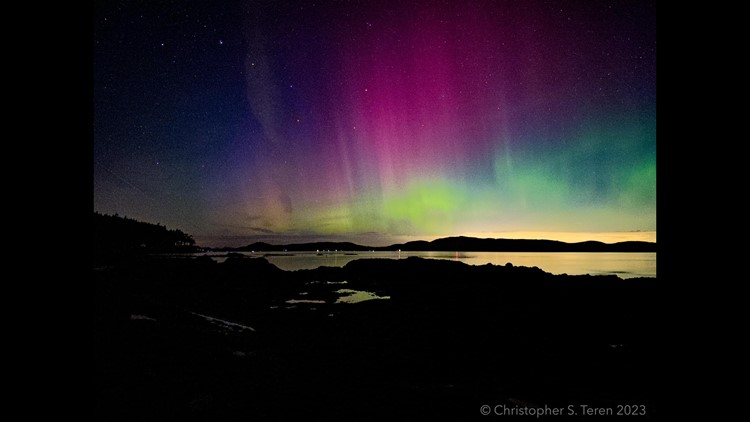SEATTLE — Unfortunately, it's unlikely that the Northern Lights will be visible in Washington on Tuesday and Wednesday, despite a geomagnetic storm.
The "view line," or the farthest south people may see aurora borealis is just into the northern counties of western Washington on both Tuesday and Wednesday, but no significant aurorae are expected either night.
The aurora borealis is a glow in the sky produced when electrons trapped in the Earth’s magnetic field are accelerated by the solar wind and collide with atoms in the atmosphere in a ring centered on the magnetic pole of Earth, according to the National Oceanic and Atmospheric Administration’s (NOAA) Space Weather Prediction Center.
A huge mass of plasma from a solar flare slammed into the earth's magnetic field late on Monday, triggering a moderate geomagnetic storm that produced a strong aurora that pushed as far south as Colorado. The phenomenon was visible in a few places in Washington on Monday, as captured in these pictures taken on Stuart Island by Christopher Teren.
Unfortunately for most of western Washington, the skies were overcast. However, other places, like Scandinavia, were treated to some spectacular aurora.
The geomagnetic storm gradually decreased and the aurora retreated into Canada. Forecasts from the NOAA Space Weather Prediction Center call for the aurora to remain north of Washington state on both Tuesday and Wednesday. Regardless, conditions will remain cloudy in western Washington on Tuesday, along with some light showers.
However, geomagnetic storms and aurorae will become more frequent during the next year as the Solar Cycle reaches the peak of its 11-year “activity” cycle mid to late 2024.



